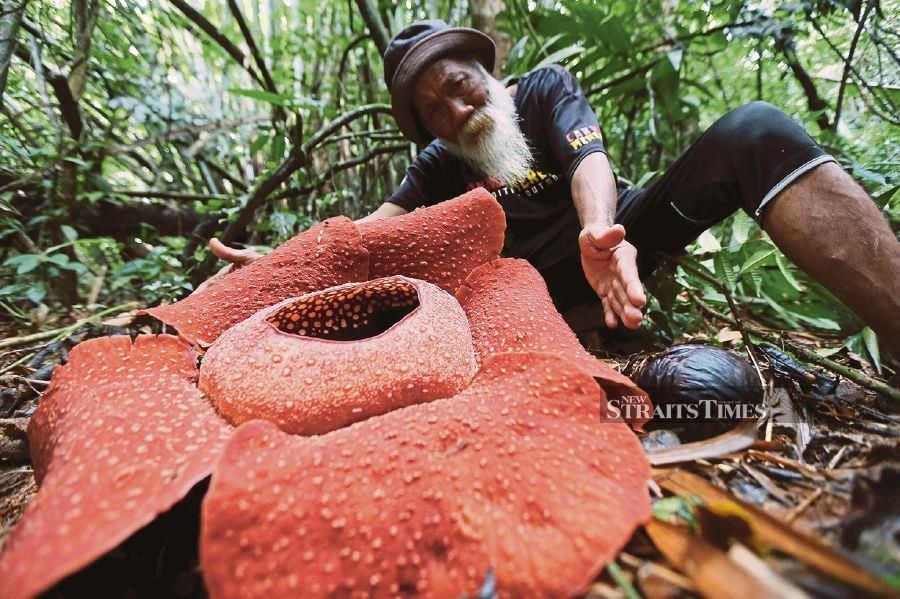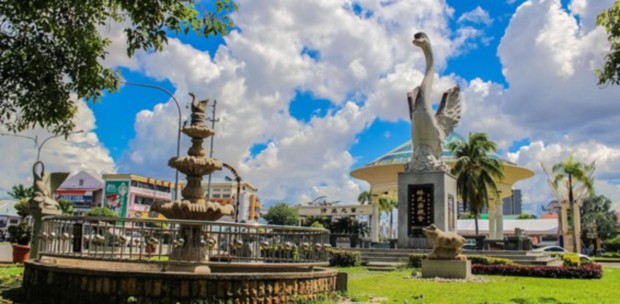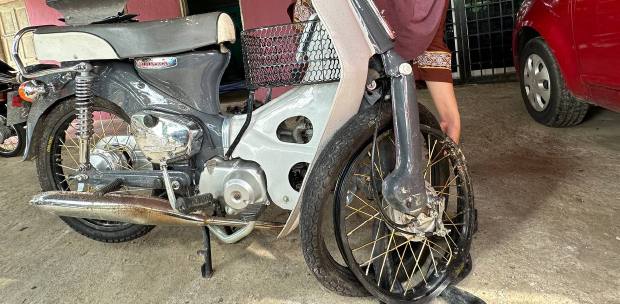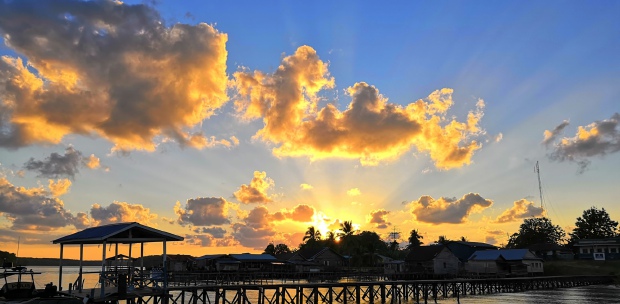It is a memorable trip to Gua Musang for Zalina Mohd Som as she is rewarded with a breathtaking view of a Rafflesia in bloom, and a chance to conquer Bukit Gua Musang.
"ADA! Ada ni, besar!
" 60-year-old Pak Kassim hollers, without pausing his steps on the squishy, muddy track. He doesn't look back, and doesn't even wait for me.
From where I am, I can only see thick clusters of giant bamboo trees, with some horizontally criss-crossing each other and other secondary jungle trees.
I can't see what Pak Kassim, a native of Lojing Highlands from a Temiar tribe, sees. In fact, I can't even see him — I can only hear his footsteps.
My view is limited to the leaves and tree trunks, and of course, his footprints and those left by earlier trekkers.
Pak Kassim had earlier gone off track, perhaps following the tips given by his fellow guide, whom we bumped into just 15 minutes into the trail.
I could only catch "buluh" and "tumbang" from the conversation between the two Temiar men as they talked in the Temiar language between their wide, honest grins that exposed their betel nut-chewing teeth.
Looking seasoned and experienced like Pak Kassim, the slightly younger guide was leading a group of eight urban-looking trekkers who looked pleased and happy, despite their mud-covered shoes and pants.
"Once you see it, all this will be worth it. Just watch your steps and be careful. It's quite slippery," one of them managed some words of encouragement. I replied with a nod and a smile, trying to hide my excitement.
I have been trying to contain my hope and excitement for a chance to see a full-bloom Rafflesia ever since I learnt about this trip.
I've seen its buds, from the size of a tennis ball to a big round cabbage, and I've seen its rotten, blackened petals. But not a well-bloomed one — not once in numerous rafflesia hunts that I made over a period of two decades!
And no one from my group, who is on an exploration trip in Gua Musang, knows this excitement I keep inside. This trip, in search of eco-tourism "hidden gems'' in the hinterland of Kelantan, is co-organised by Gua Musang District Council and Jasa Teratai Holidays Sdn Bhd (www.kelantanattractions.com/09-766 7990).
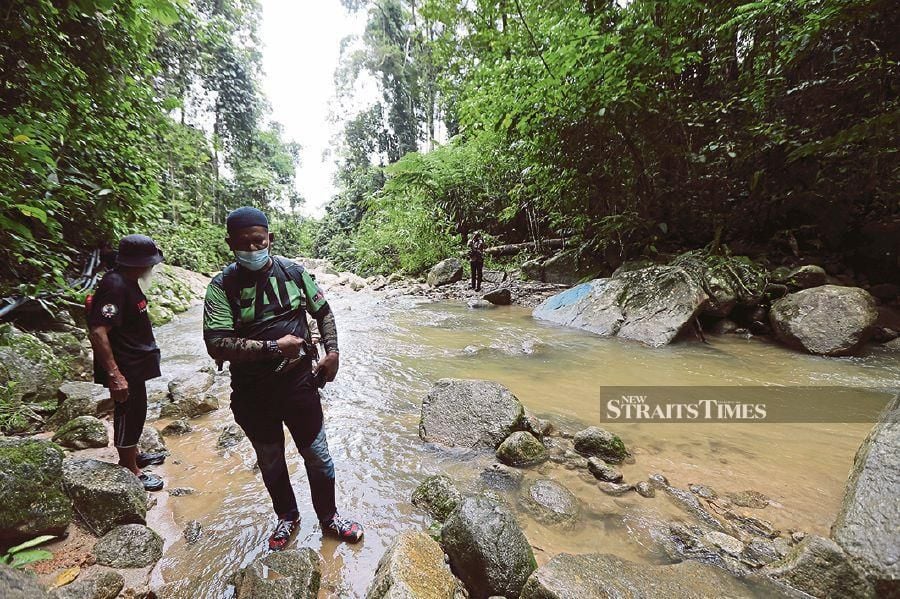
RARE SIGHT
Suddenly, Pak Kassim's footsteps stop. I can't hear anything. I try looking for any movements in front of me, but everything is still.
The jungle floor where I believe Pak Kassim is heading to is covered with wet, dried leaves and tree branches.
And there is a huge uprooted tree with its trunk in a prostrating position, leaving a small gap at the base of its roots.
"Pak Kassim!" I cry out.
"Here. Go under the tree trunk, it's here," comes his reply. I turn to look at the rest of my group and I can only see glimpses of their shirts between the thick foliage.
Worried that they may not know where to go, I scream: "There's a fallen tree, just walk under it." I can't wait for them, heck, I don't want to wait for them.
I get down and duck-walk under the trunk, and the moment I get to the other side, I see the brightest and most beautiful deep, orangey red that I have ever seen.
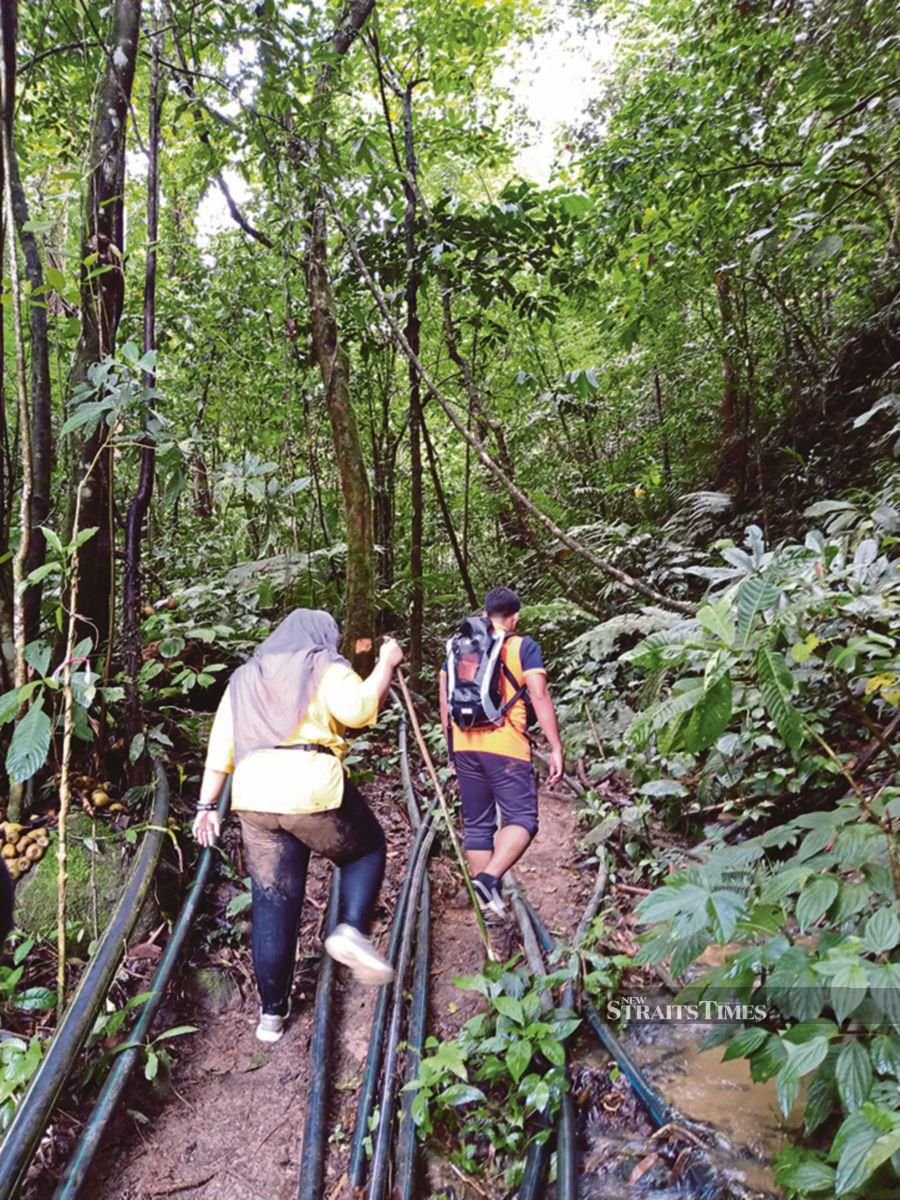
A few steps closer and it becomes clearer and bigger. Sitting pretty on the ground is a huge five-petal Rafflesia that has all its petals opened out, but only to curl slightly at the end. I believe the bloom stretches up to 90cm, from end to end.
Looking down on this beautiful flower, I can see every detail on the petals — the tiny warts that give the polka-dots pattern on the petals and the diaphragm, and the poking central column that sits at the bottom of the diaphragm. I wish I can touch this beauty, to feel every texture it has against my fingers.
"Don't touch the flower ya," Pak Kassim warns softly, as if he could read my mind, "the substance in our skin — sweat, lotion or what not — will make the flower decay faster."
"And oh, watch your step too. There's a small bud next to the flower," he adds.
One by one my team members start to reach the site. Satisfied with everyone's presence, Pak Kassim clears his throat and starts his briefing.
"This is Rafflesia kerrii and it's about two to three days of bloom. See that vine. That's tetrastigma vine, the host plant for Rafflesia," he says.
Pak Kassim says the area, about 500ha of land covering Sungai Dengkong Forest Reserve, has been gazetted as Lojing Highlands Rafflesia Conservation Park.
For the record, the kerrii species found in the conservation area is said to be the world's second largest, after a species native to West Sumatra, Indonesia.
He says most of the time, he and his fellow guides can tell when and where the full-bloom Rafflesia will be, based on the location of the tetrastigma vines and the size of the buds.
Giving everyone some photo-ops with the star of the trek, Pak Kassim takes slow, cautious walks, following the vine. And I follow him closely from behind.
"Ah, here's another bud. This will bloom in a week's time," he announces. He quickly grabs a few sticks and pokes them around the bud. "So that we won't accidentally kick it," he says.

TOUGH CIVET
"Are you up for another hike?" asks Zuke, an old friend whom I met over 15 years ago during a rafting expedition on Sungai Nenggiri, the district's main network of the river system that is known for its rapids.
"Nak!" I answer without thinking twice. The exhaustion and excitement from yesterday's 8km hike, the lack of sleep — thanks to the cold and wet night at Kampung Pos Tuel — and today's 90-minute bumpy drive from Lojing Highlands disappear immediately.
"Okay, I will get it organised," says Zuke, who is also an officer with the council. "You'll like it."
So, there we go heading to the old Gua Musang train station, where two men are already waiting for us. As we walk to join them, Zuke hands me a pair of gardening gloves: "You need these."
Now, this will be my first climb in Malaysia, except for Gunung Kinabalu, that requires me to wear a pair of gloves.
Not wasting any more time, after a short ice-breaking session, we walk towards the end of the pavement along the railway track before jumping down on the track.
Across the track is a cluster of squatters that look like they are sitting right at the foot of Bukit Gua Musang (which literally means civet cave).
Somehow walking across the track towards the squatters makes me believe that the climb of this not-so-high hill will be as exciting, if not more, as yesterday's hike.

A short walk along a narrow alley in the settlement takes us to a small open ground that is well-shaded by the towering limestone hill and big tall trees.
It's the end of the road as the rocky hillside vertically shoots up from the ground, and on its face there's a thick nylon rope that has grip knots set at about 30cm apart.
Looking further up, I can see the top part of a ladder. How many ladders and how high the ladder is, I can only tell once I scale up this rope route.
"Yes, we're going up from here, and it's going to be like this until we enter the cave chamber," Zuke says. But, he fails to warn me about the cave entrance.
Claustrophobia gets the best of me, and I almost turn back at the sight of the tight and narrow crevice, but not wanting to let the hard work of climbing the ropes and ladders be wasted, I push through.
"Walk sideways, look ahead at me and listen to my instructions. Take one step at a time," Zuke instructs from the other end of the passage.

As my eyes look ahead in his direction, I can see a wide and bright chamber behind him and that soothes my anxiety, as I slowly make my way out of the crevice.
The narrow entrance definitely holds no indication of how the cave stomach looks like. There is actually a huge wide mouth at both ends of the walk-through chamber, the very reasons that give the chamber a lot of natural light and fresh air.
We walk towards the opposite cave mouth, but in between the two cave mouths, there's a couple of ladders and rope climbs, but they are not as vertical as the earlier ones.
"Now, we're outside of the cave and after this ladder, we'll walk on the hillside trail that will take us to the peak," Zuke says as he climbs up the last ladder.
But walk, we do not. Well, at least, not for the not-so-tall me.
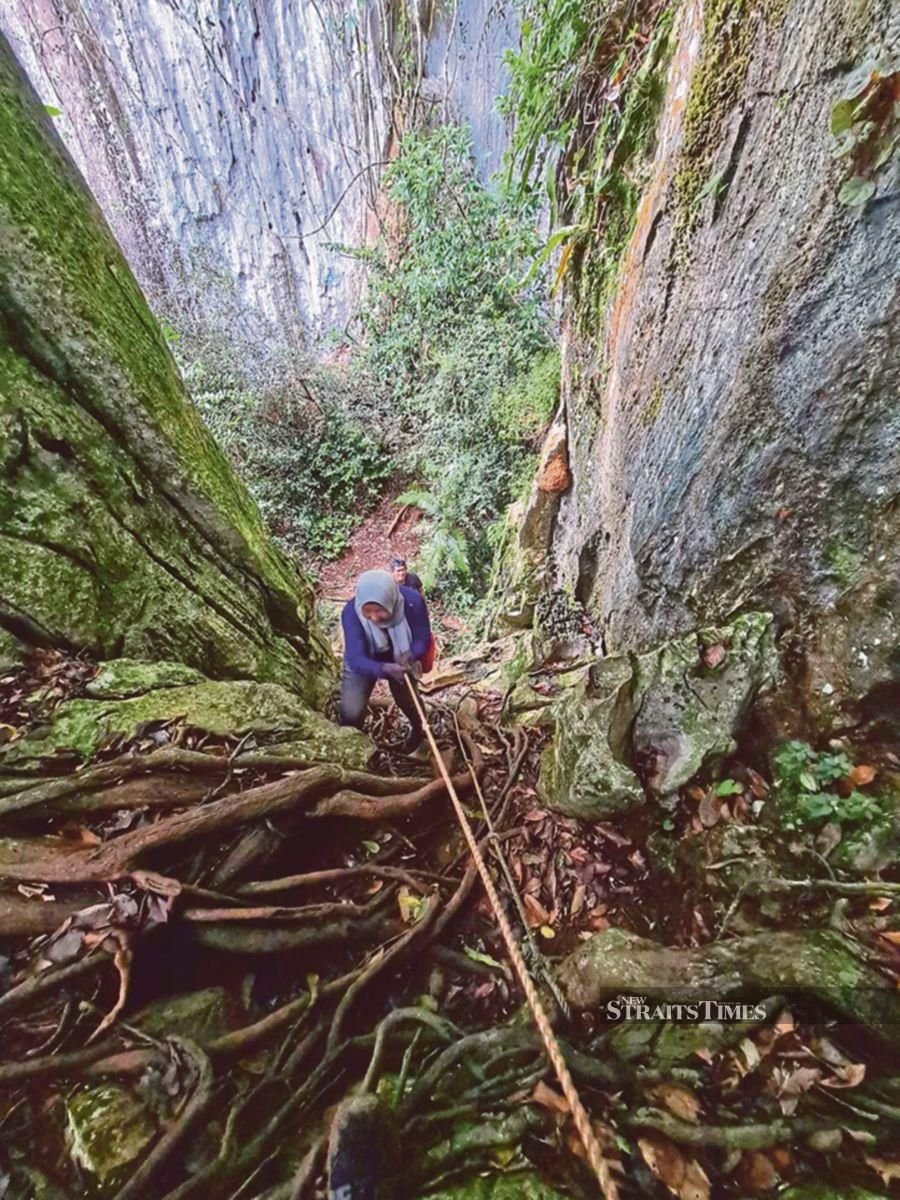
At every three or four steps of walking on the soft, unfirm ground, which I assume is made up of accumulated dirt and forest debris trapped between the limestone rugged surface, the ascending trail forces me to clamber on all fours up steep rocky sections.
Some climbs are quite tricky and challenging with exposed sharp limestones, which most of the time make me think of the challenge the descent has in store for me.
But thankfully the tricky terrain keeps my mind off the taxing climb and without realising it, the ascending trail starts to level and disappear in between razor-sharp limestone rocks that jut out of the ground. Much like the peaks of The Pinnacles in Mulu National Park in Sarawak, but much shorter.
Zuke leads the way to the opposite edge of the rugged table-top like peak, and I cautiously follow, trying to put my footing at every rock he stepped on. But of course, I can't!
Slowly but surely, I finally stand next to him on a levelled rock, facing a sweeping view of the old town of Gua Musang with a rolling mountain range at the far end of the horizon.
Ah, what a beautiful reward!
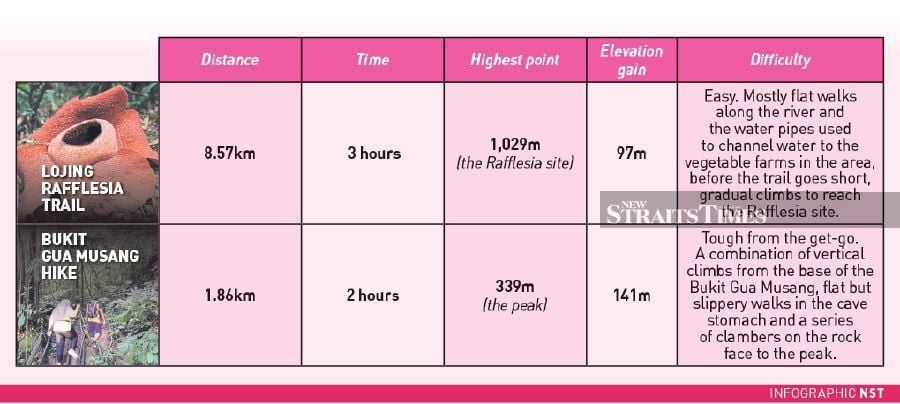
Enjoy outdoor activities at Gua Musang at cheaper prices by applying Agoda Voucher.


